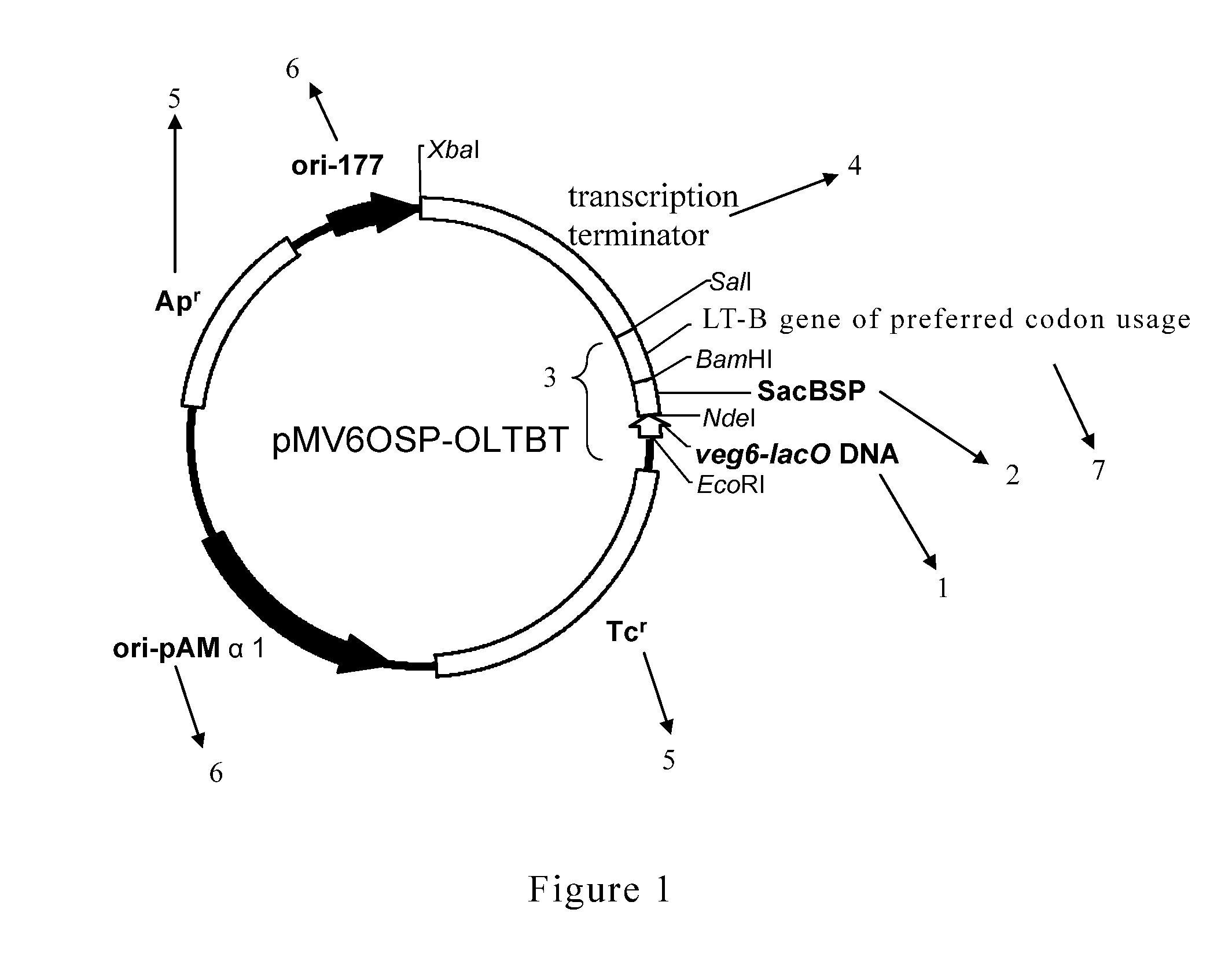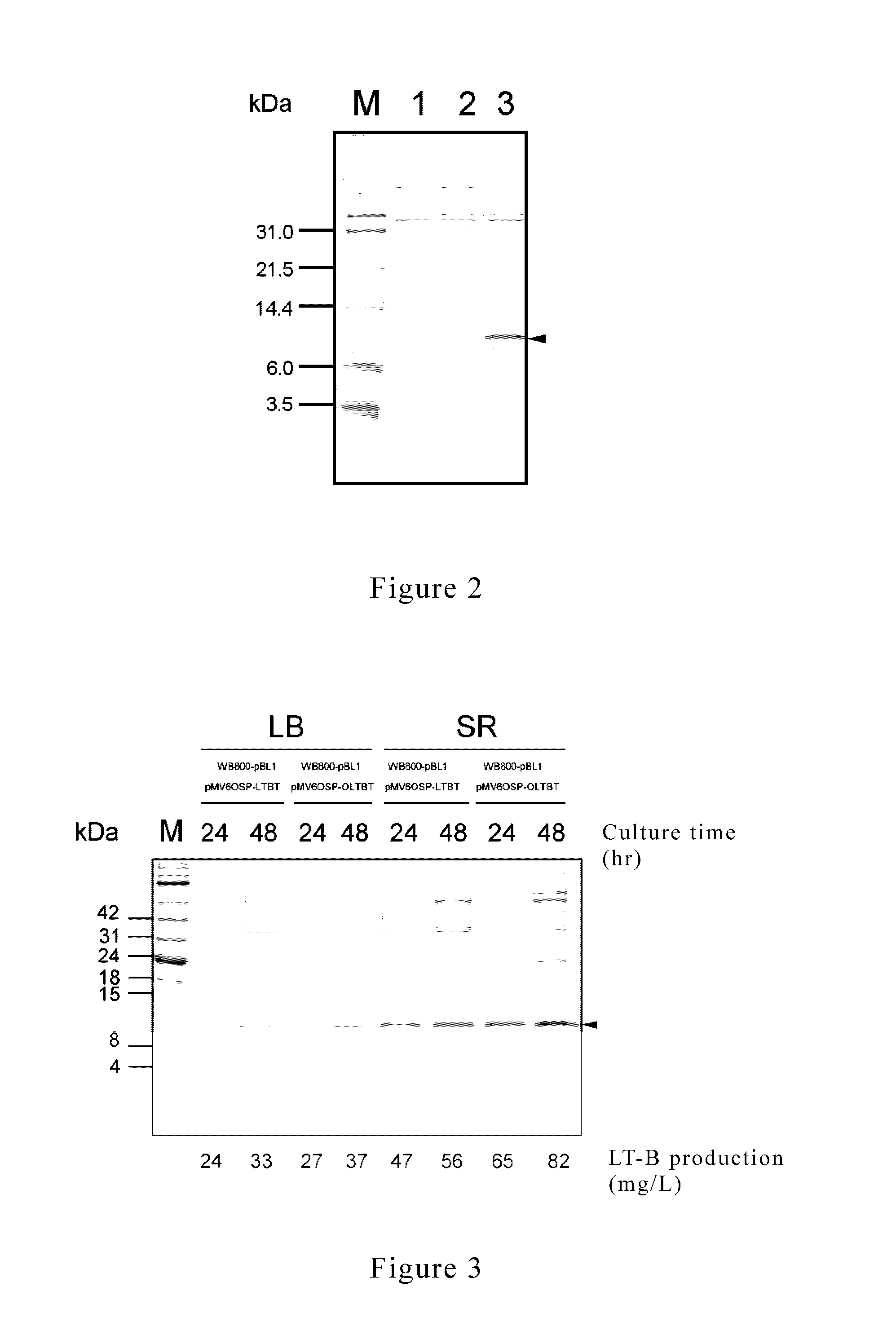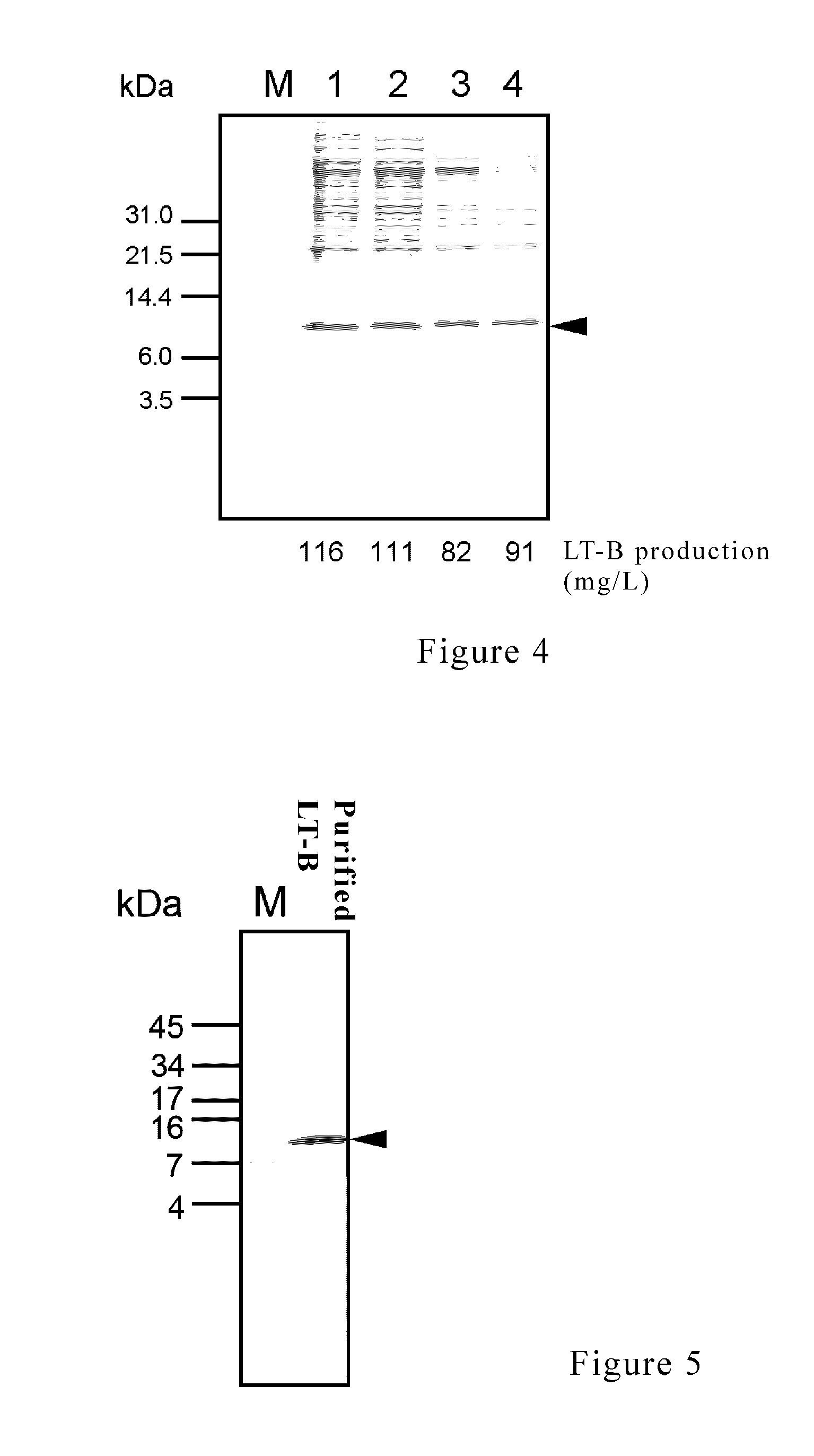Plasmid, method and kit thereof for producing heat labile enterotoxin b-subunit
a technology of exterotoxin and plasmid, which is applied in the direction of depsipeptides, chemistry apparatus and processes, peptides, etc., can solve the problems of increased lt-b production cost, low yield rate, and inability to meet the requirements of use, so as to achieve good yield rate and ease of operation
- Summary
- Abstract
- Description
- Claims
- Application Information
AI Technical Summary
Benefits of technology
Problems solved by technology
Method used
Image
Examples
example 1
Strains and Culture Thereof
[0056]In the development of the present invention, Escherichia coli TA-196ELT was used as the source of LT-B gene and Escherichia coli JM109 was used as the host cell for gene cloning. Besides, Bacillus subtilis WB800 (pBL1) was used as the host cell for protein expression.
[0057]Said Escherichia coli strain was cultured in LB medium (Luria-Bertani, Difco, USA). Said Bacillus subtilis strain was cultured in LB medium or SR medium (2% yeast extract, 2.5% Bacto tryptose, 0.3% K2HPO4, pH 7.5).
example 2
Construction of the Plasmid of the Present Invention
[0058]1. Construction of p300MCST
[0059]In order to facilitate the subsequence cloning steps, this experiment replaced the original multiple cloning site of plasmid pHY300PLK (Takara, Japan) with an artificial multiple cloning site.
[0060]First of all, the synthesis of the multiple cloning site was made by using overlapping-extension polymerase chain reaction, OEPCR; wherein the restriction enzyme cutting sites set therein included EcoRI, BglII, SpeI, NdeI, NruI, BamHI, XmaI, PstI, SalI, XhoI, XbaI, and HindIII. The primers designed for use included MCST1, MCST2, MCSF, and MCSR (See Table 1); wherein MCST1 and MCST2 were used as template primers while MCSF and MCSR are used as amplification primers.
TABLE 1NameSequence (5′ to 3′)SEQ ID NOMCST1ACTAGTCATATGTCGCGAGGATCCCCCGGGCTGCAGAT06MCST2ATCGTCGACATGCATCTGCAGCCCGGGGGATC07MCSFGATATAGAATTCGCTAGCAGATCTACTAGTCATAT08GTCGCGAGGATCCMCSRCAATATAAGCTTTACGTATCTAGAGCACTCGAGATCG09TCGACATGCATCTGCAGC
[...
example 3
The Evaluation of the Adjuvant Effect of the LT-B Prepared by the Present Expression System
[0086]Enhanced Green Fluorescent Protein (GFP+) was used as model antigen in this experiment for mixing with the present LT-B as adjuvant. The mice used in this experiment were 5-weeks-old BALB / c female mice (purchased from National Laboratory Animal Center, NLAC). The mice were fed with clean food and water in standard animal room with air condition for 7 days before starting the immune tests.
[0087]The mice were separated into A, B, C groups. Each group had three mice. Group A was treated with 0.5 mL GFP+ solution (containing 50 μg GFP+, 10 mM Na2HPO4, and 1.5 mM NaH2PO4, pH 7.5) via intraperitoneal injection. Group B was treated with 0.5 mL solution containing GFP+ and recombinant LT-B (containing 50 μg GFP+, 50 μg LT-B, 10 mM Na2HPO4, and 1.5 mM NaH2PO4, pH 7.5) via intraperitoneal injection. Group C was treated with 0.5 mL solution containing GFP+ and recombinant LT-B (containing 50 μg GFP...
PUM
| Property | Measurement | Unit |
|---|---|---|
| pH | aaaaa | aaaaa |
| v/v | aaaaa | aaaaa |
| pH | aaaaa | aaaaa |
Abstract
Description
Claims
Application Information
 Login to View More
Login to View More - R&D
- Intellectual Property
- Life Sciences
- Materials
- Tech Scout
- Unparalleled Data Quality
- Higher Quality Content
- 60% Fewer Hallucinations
Browse by: Latest US Patents, China's latest patents, Technical Efficacy Thesaurus, Application Domain, Technology Topic, Popular Technical Reports.
© 2025 PatSnap. All rights reserved.Legal|Privacy policy|Modern Slavery Act Transparency Statement|Sitemap|About US| Contact US: help@patsnap.com



